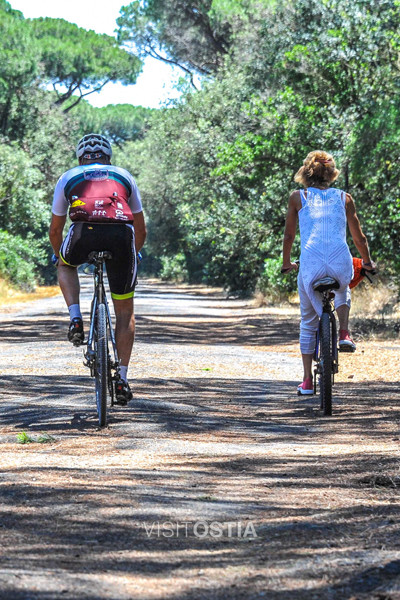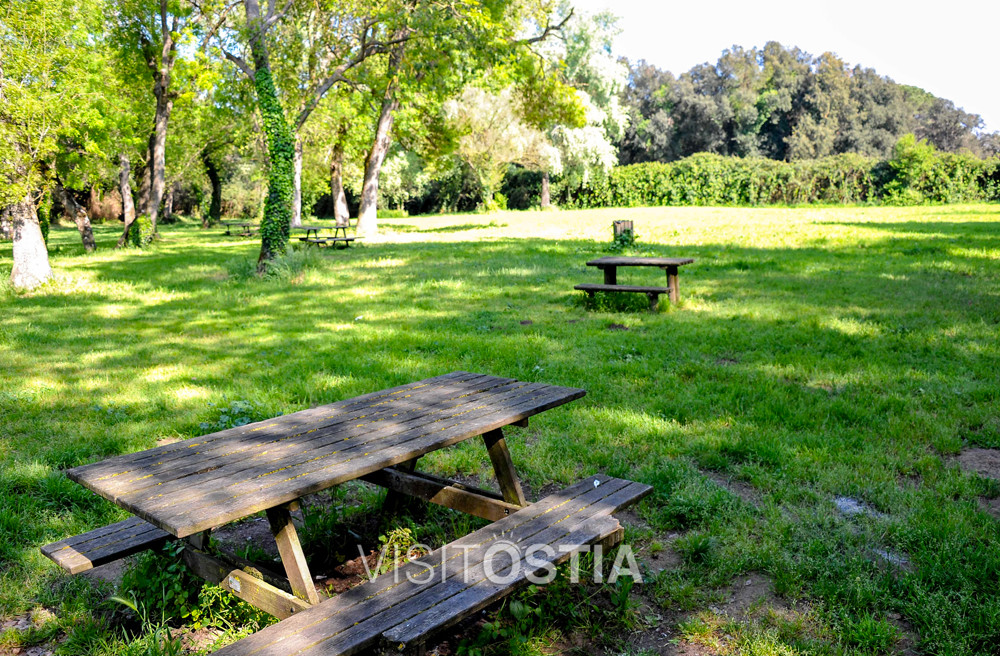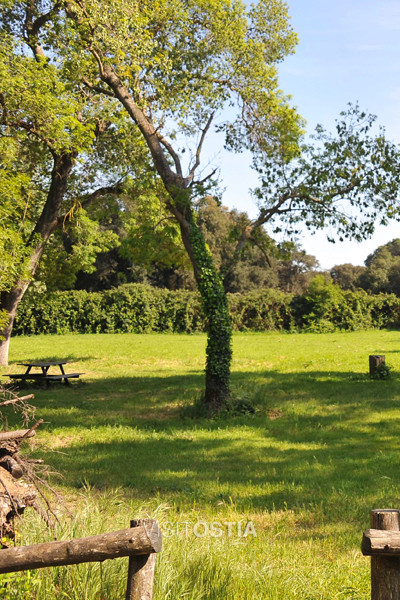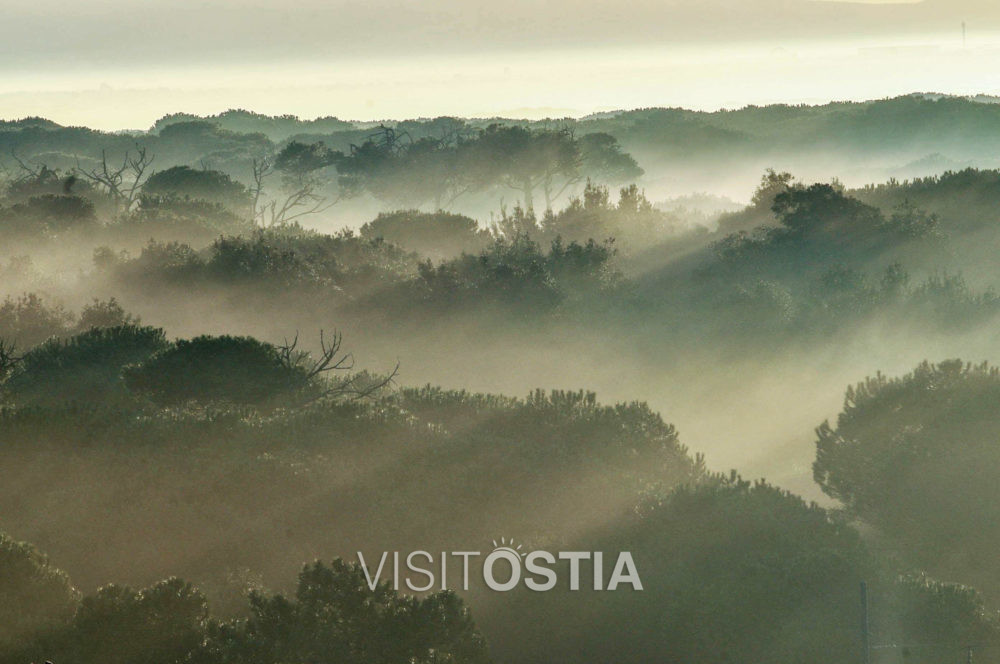Castel Fusano park is reachable from Rome by car taking via Cristoforo Colombo (the last two traffic lights, Ostia Lido direction, are within the Reserve of Castel Fusano) or by train, using the Roma-Lido light rail line to Ostia Lido (the stops where to drop off the train are “Castel Fusano” or “Cristoforo Colombo“). As for the first station the forest is easily accessible just as you get off the train, as for the second after having got off the train you must go along about 150 metres of parallel to via Colombo, before reaching a safe area.
The park extends for 1160 hectars. The area is partially traversed by 2 high-flowing roads (via Cristoforo Colombo, via della Villa di Plinio and along the perimeter by via Litoranea and via del Lido di Castelporziano).
The north / western border of this park is represented by the Canale dello Stagno or by Canale dei Pescatori. This was canalized during the reclamation, because before it was a river which connected an ancient pond to the sea.
The canal, especially near to the water pumps, hosts various species of birds, reptiles and amphibians. This area is bordered by the pine forest of Castel Fusano and it is particularly rich of cane thickets, both humid or dry. There are also many eucaliptuses and willows.
All year round you can see grey herons, egrets, nightingales, warblers, red warblers, moorhens and little bitterns. Recently the experts have also found nests of a green warbler. In winter bitterns rest among the canes while spoonbills, ospreys and black kites, quickly appear.
As to amphibians you often meet green frogs, toads, tree frogs and green toads.
Walking along the banks of the canal it is not impossible to see weasels and hedgehogs.

Vegetation is certainly dominated by the domestic pine tree and by holm oaks, stone pine trees scent the air of resin, above all during the hot summer evenings. In the more humid areas, you find oak trees, some hundreds years old. In these areas you also find willows and ash trees together with elms.
A vast area of the park is occupied by phyllireas and lentisc, which are the most common species alongside myrtle, buckhorn, cistus, sage, brooms privets, strawberry trees, heather and junipers.
The undergrowth is composed by holm oaks together with hollies and cyclamens with all their shades of pink. Laurus and cornilla, ivy phyllirea and buckthorn are also present.
In summer splendid are the flowers of honeysuckles, cistus and broom. Where the scrub is a little bit thinner there are many small flowers and asphodels, with some spindle, blackthorn, elderberry, wild apple, sedges, phragmites and aneas.
The wildlife is interesting too. There are many foxes, wild rabbits, various species of birds, martens, weasels and wood pidgeons. Black rats often pillage their nests. Hedgehogs are always very quiet and moles are the biggest insectivorous mammals in the park.
You could meet a badger along the path with his black and white stripes. Very similar in size is the porcupine with its typical quills. Among the ungulates you have boars and roe deers.
The birds are obviously easier to see: blackbirds, jays, chaffinches, greenfinches, goldfinches, serins, robins, blackcaps, green and red woodpeckers, unthatches, whitethroats, warblers, hoopoes, bee eaters, great tits, blue tits, brown tits, long tailed tits. Nighttime owls and yokels.

The reptiles of the park are: colubers, aesculapian snakes, grass snakes, vipers, wall lizards, lizards and green lizards, blind worms.
The amphibians were very numerous in the past, but the reclamation and the lack of vast wet places has lowered the number of reproductive areas. So the most common one remains the toad.

The name Castel Fusano comes from Fusanium which probably came from the name of the landowner.
Coming from Ostia Antica, along via di Castel Fusano at the crossing with via dei Pescatori you cross the bridge over Canale dello Stagno. This is a modern bridge which replaced a Roman one, destroyed in 1943. It was 500 mt ahead and it allowed via Severiana to cross the canal. The only thing which remains of it, is an inscription, kept in villa Sacchetti Chigi. From this you understand that a wooden bridge was rebuilt in stone in 284 b.C. under Emperor Caro.
After the bridge, turn left and after about 200 mt there is a path, which leads to villa Sacchetti, today villa Chigi. Of the original Castrum Fusani there is absolutely no trace, we do not know if it was a castle, an estate, more buildings, a fortification and probably it was not even here. In this area, up to the XVII century there were some vineyards around which then grew a settlement. In 1620 Giulio Sacchetti bought the land, he arrived to own 200 hectares.

Excerpt from: S. Lorenzatti (a cura di), Ostia. Storia, ambiente, itinerari, Roma 2007






